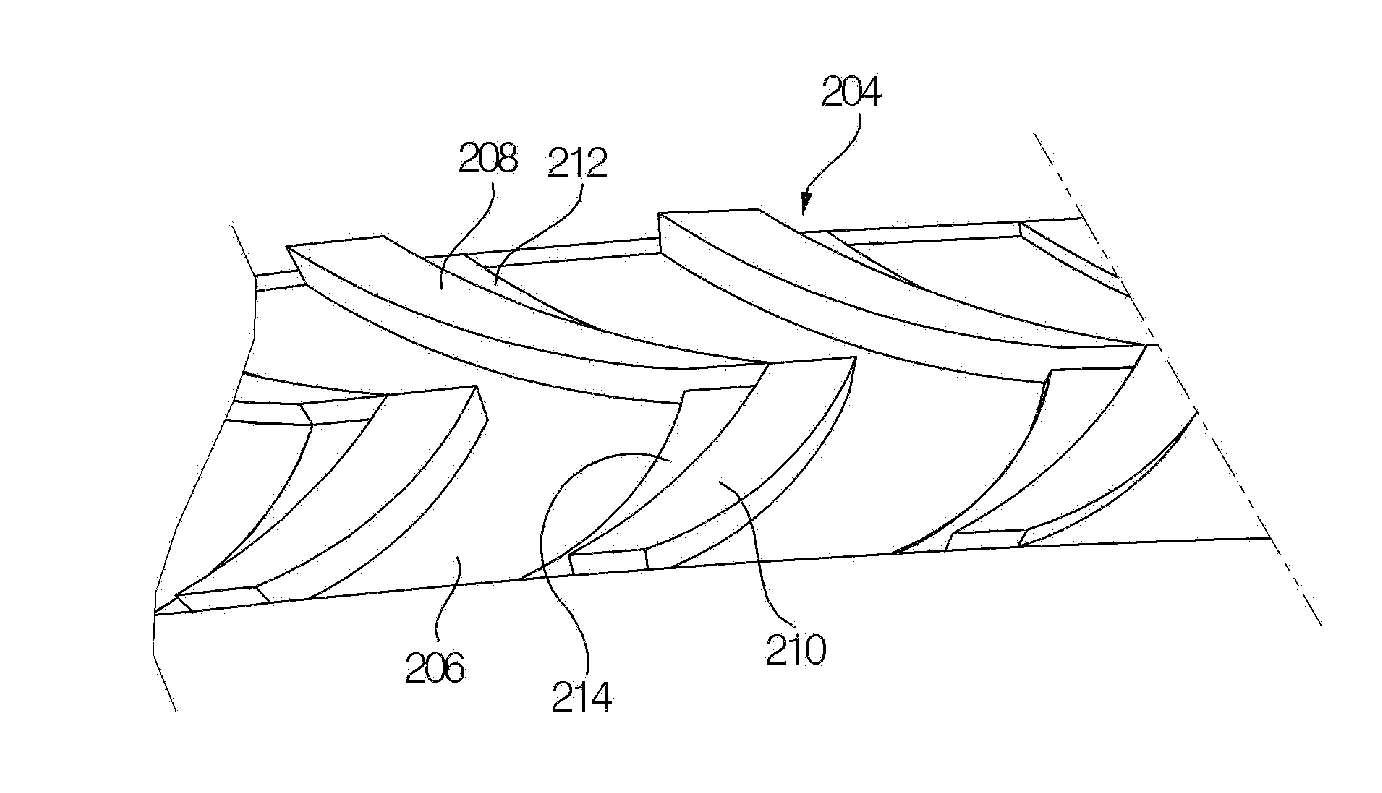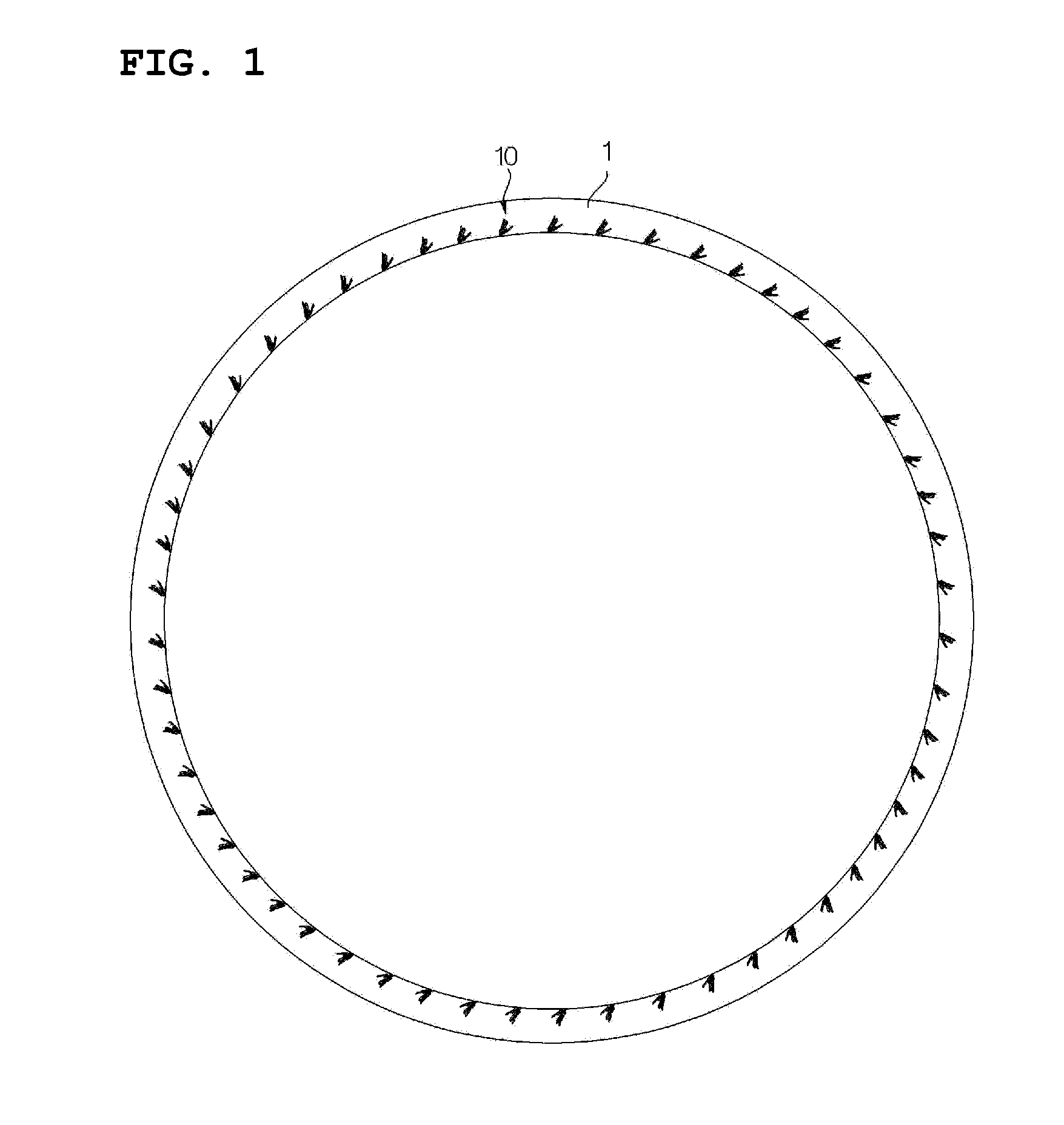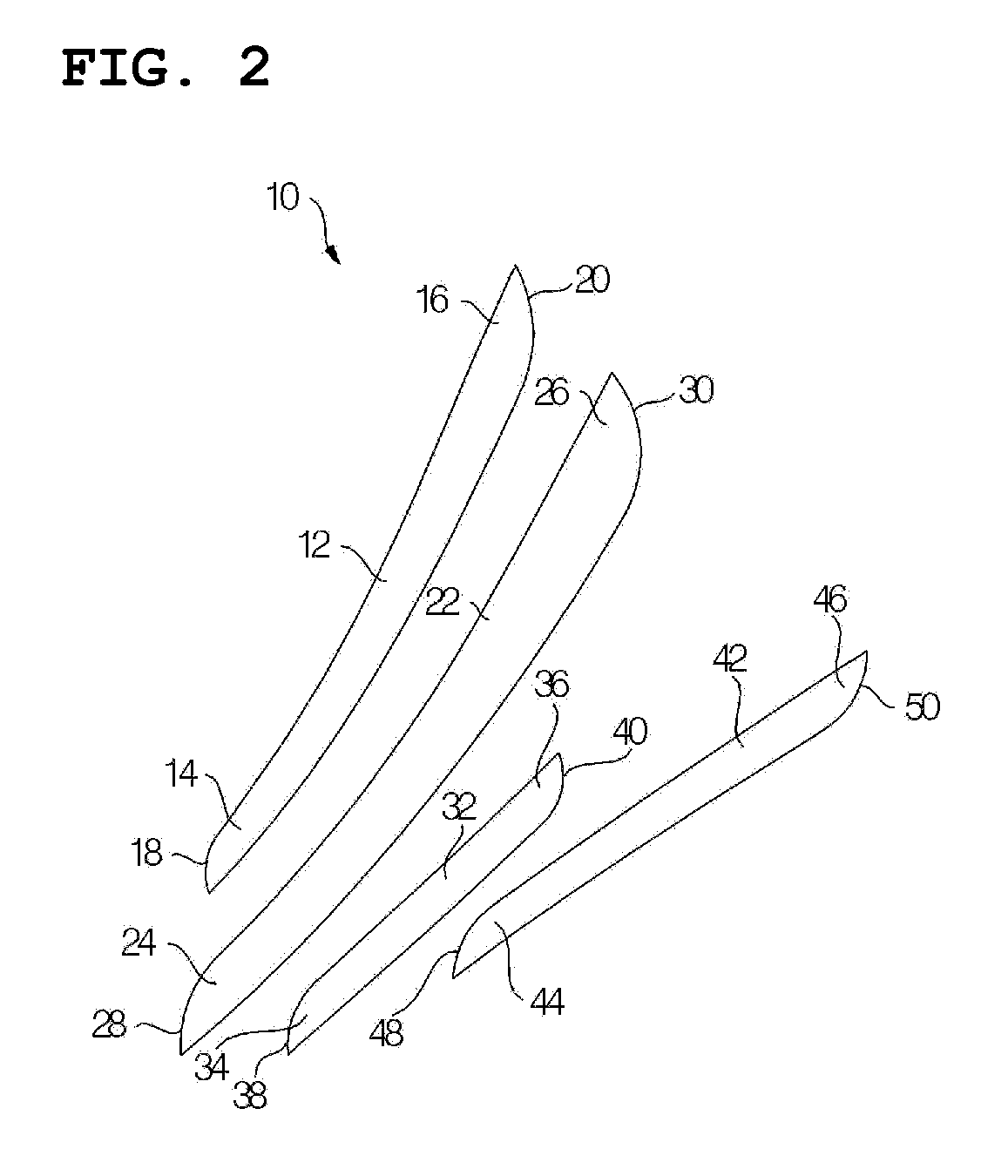Method for determining pitches of cooling pins for a pneumatic tire and pneumatic tire including cooling pins arranged by the same
a technology of pneumatic tires and cooling pins, which is applied in vehicle tyre testing, instruments, roads, etc., can solve the problems of reducing the lifespan of each component, reducing the heat dissipation performance of rubber which is a major component of the tire, and generating relative high temperature heat from the tire mounted on the vehicle. , to achieve the effect of improving the heat dissipation performance of the sidewall, reducing air flow noise, and improving the quality of the tir
- Summary
- Abstract
- Description
- Claims
- Application Information
AI Technical Summary
Benefits of technology
Problems solved by technology
Method used
Image
Examples
first embodiment
[0042]Next, the cooling fins 10 of a pneumatic tire 1 according to the present invention will be described with reference to FIGS. 1 to 3.
[0043]As shown in FIG. 2, the cooling fin 10 includes a plurality of (four in the present invention) bar-shaped pin unit bodies 12, 22, 32 and 42 which are arranged at predetermined intervals with each other in a circumferential direction of the tire, and are arranged to be inclined toward a radial direction of the tire. At this time, it is preferable that the pin unit bodies 12, 22, 32 and 42 have an inclination angle of 20 to 60° in terms of cooling, and the cooling fin 10 includes two to six pin unit bodies 12, 22, 32 and 42.
[0044]The pin unit bodies 12, 22, 32 and 42 may be formed to incline substantially at 30 to 60° toward the radial direction of the tire. When the pin unit bodies 12, 22, 32 and 42 are formed to incline within the above-described range, air flow from the front flows to outside in a radial direction of the tire.
[0045]Herein, ...
second embodiment
[0049]Next, cooling fins 104 of a pneumatic tire 100 according to the present invention will be described with reference to FIGS. 4 to 7.
[0050]As shown in FIGS. 5 and 6, the cooling fins 104, formed on a surface of a sidewall 102 of the pneumatic tire 100 according to the second embodiment of the present invention, include a first bar part 110 and a second bar part 106 which are connected with each other at an acute angle. Therefore, the cooling fin 104 is formed in a substantially V shape by the first and second bar parts 110 and 106 as a whole. Herein, a V-shaped vertex formed by the first and second bar parts 110 and 106 is disposed to be inclined in the circumferential direction of the tire.
[0051]In addition, the second bar part 106 is formed to be inclined in the radial direction of the tire. As a result, an angle of the second bar part 106 with respect to the radial direction of the tire is smaller than that of the first bar part 110 with respect to the radial direction of the...
third embodiment
[0055]Finally, cooling fins 204 of a pneumatic tire 200 according to the present invention will be described with reference to FIGS. 8 to 10.
[0056]As shown in FIG. 10, the cooling fins 204, formed on a surface of a sidewall 202 of the pneumatic tire 200 according to the third embodiment of the present invention, include a first protrusion part 208 and a second protrusion part 210 which are connected with each other at an acute angle. Therefore, the cooling fin 204 is formed in a substantially V shape by the first and second protrusion parts 208 and 210 as a whole. Herein, a V-shaped vertex formed by the first and second protrusion parts 208 and 210 is disposed in the circumferential direction of the tire.
[0057]Herein, the first protrusion part 208 and the second protrusion part 210 are formed to be inclined in the radial direction of the tire with incline directions opposite to each other.
[0058]In addition, an end portion of the second bar part 210 is disposed closer to the center o...
PUM
 Login to View More
Login to View More Abstract
Description
Claims
Application Information
 Login to View More
Login to View More - R&D
- Intellectual Property
- Life Sciences
- Materials
- Tech Scout
- Unparalleled Data Quality
- Higher Quality Content
- 60% Fewer Hallucinations
Browse by: Latest US Patents, China's latest patents, Technical Efficacy Thesaurus, Application Domain, Technology Topic, Popular Technical Reports.
© 2025 PatSnap. All rights reserved.Legal|Privacy policy|Modern Slavery Act Transparency Statement|Sitemap|About US| Contact US: help@patsnap.com



